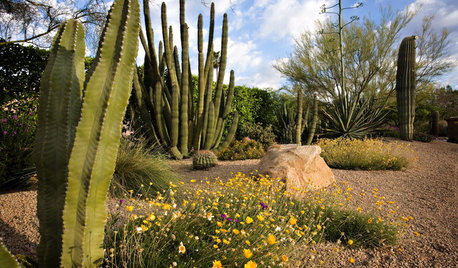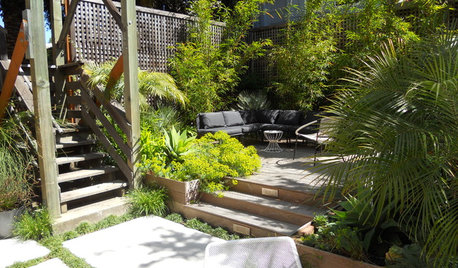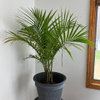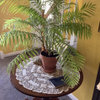Last spring I bought two single trunk Pygmy Date Palms from a grower in Florida to try as indoor plants at my office. From the soil to the crown, they're both about 4 feet tall, and maybe another 3 feet to the top of the fronds. They arrived healthy, but in the 9 months or so that I've had them they've been losing their lower fronds pretty rapidly. For a while they still seemed healthy, but now they're looking kinda droopy and sad. And what concerns me is that they both have several new spears, but those fronds haven't opened, or have only opened a little bit.
Here's a picture of one of them:
{{gwi:1123042}}
They're in a humus-y cactus mix and I've fed them with a 13-3-13 Palm Fertilizer (Lesco). They're in self-watering containers now, but I continue to water from the top too. The grower said to drench them twice a day, but he was growing them in full sun in Miami, so I take that with a big grain of salt and water when my moisture meter is on the dry side of moist.
I'm concerned that they're not growing properly because they're not getting enough light, but it's just a guess. I've read that they grow in filtered to full sunlight outdoors, but to place them in indirect light indoors. I have them next to southwest-facing 7-foot windows, but the pots are so tall that it puts most of the leaves above the direct light. And it's winter in Seattle...
So, I know that this is mainly an /outdoor/ palm forum, but I thought you guys might know more than the houseplant forumites when it comes to palms. I would appreciate any thoughts or anecdotal reckonings you may have.
Thanks,
Ben








tropicalzone7
User
Related Discussions
Pindo Palm spear pull ?
Q
Phoenix roebelenii Palm
Q
why is 1 roebelenii outgrowing the other?
Q
Too much water for a Phoenix Roebellini?
Q
ben44Original Author
pj_orlando_z9b
ben44Original Author
User
User
ben44Original Author